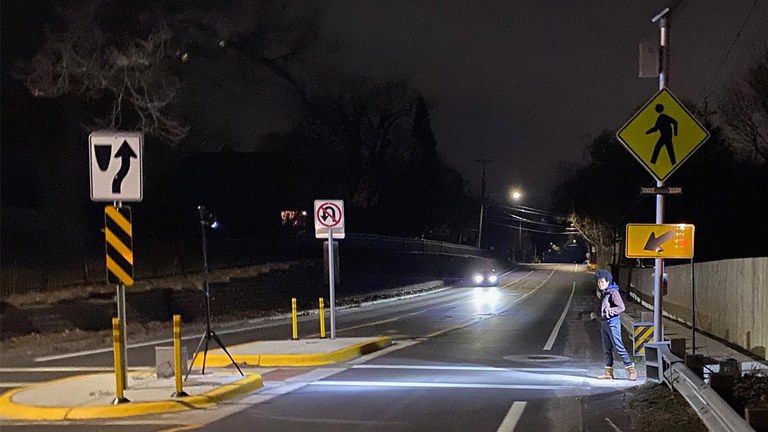Lighted crosswalks make drivers more apt to yield to pedestrians
Shift into Safe News
In areas with few streetlights, drivers are more than three times as likely to yield to pedestrians at illuminated crosswalks than at dark ones, a new study from the Insurance Institute for Highway Safety (IIHS) shows. At lighted crosswalks that also include flashing yellow warning beacons, drivers are more than 13 times as likely to yield.
“These results show that simple changes can have a dramatic impact on pedestrian safety,” IIHS President David Harkey said. “When drivers are yielding, pedestrians aren’t dying.”
About 75% of the 7,522 pedestrians who died in motor vehicle crashes in 2022 were killed in the dark, suggesting that improved lighting could help stem the rising tide of pedestrian fatalities.
To help identify the most effective interventions, researchers from IIHS and Western Michigan University compared the effects of different crosswalk lighting systems at two T intersections, a four-way intersection and a midblock location in Kalamazoo, Michigan. None of the locations had a stop sign or traffic signal. The crosswalk at one of the T intersections featured a rectangular rapid flashing beacon (RRFB). RRFBs are yellow LEDs mounted to pedestrian or bicycle crossing signs that flash intermittently when activated by a person attempting to cross.
The existing streetlights at the midblock location provided 20 lux of illumination, as federal guidelines suggest for midblock crosswalks, while illumination at the three intersections was less than 3 lux.

At all four locations, the researchers tested the effects of a commercial crosswalk illuminator when it was set to provide light on a constant basis and when it was set to come on only when triggered by a pedestrian. At the site with the RRFB, they also tested the effect of the beacon alone and combined with the triggered illuminator.
In contrast to overhead streetlights, crosswalk illuminators are LED floodlights that shine horizontally across the street. The model the researchers used provided 20 lux of vertical illumination at the crosswalk entrance.
In general, the researchers found that any type of added lighting or flashing beacons improved yielding at the three dark locations. However, yielding was highest with the combination of flashers and triggered crosswalk lighting.
For more information about this research, visit the Insurance Institute for Highway Safety Lighting Up Crosswalks article.
